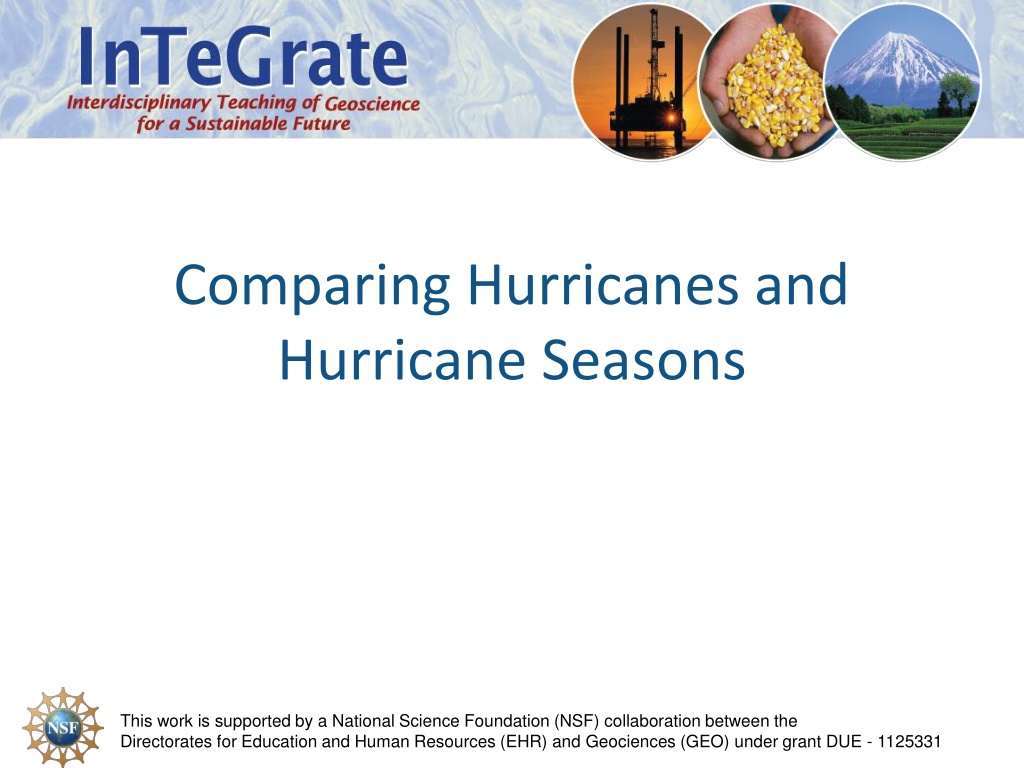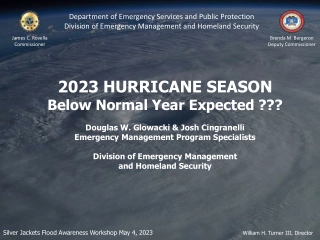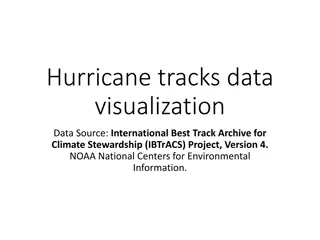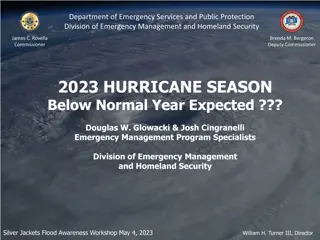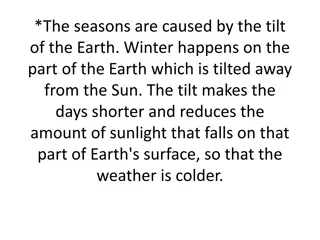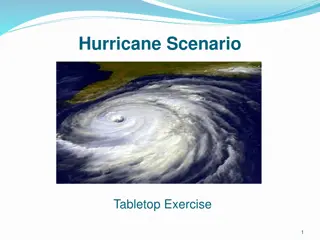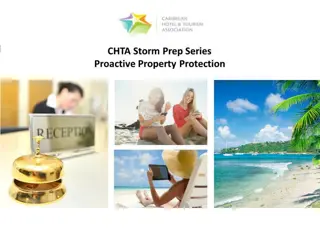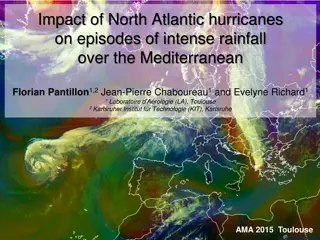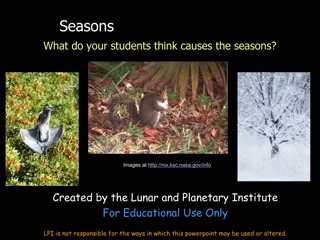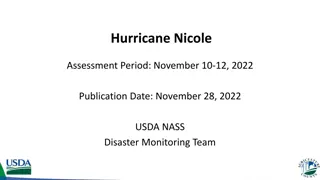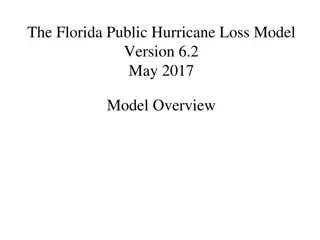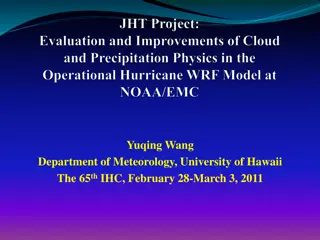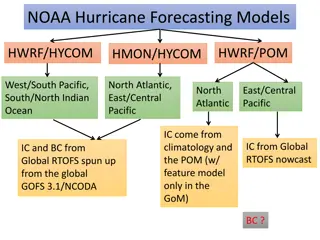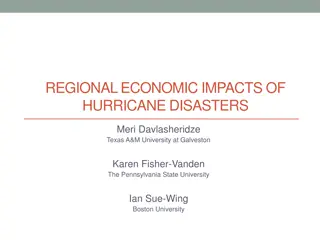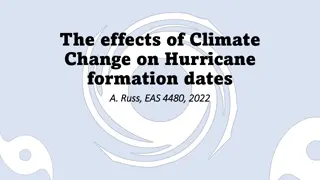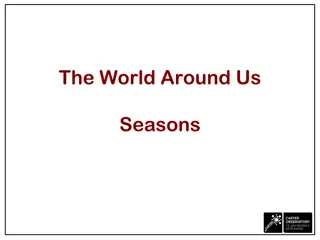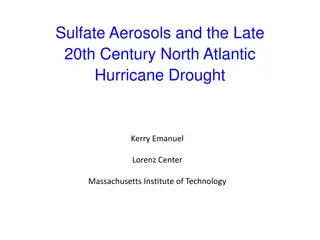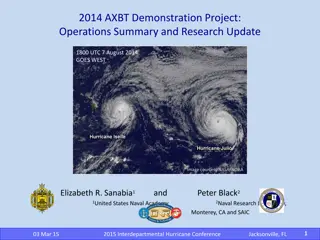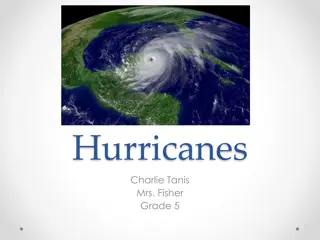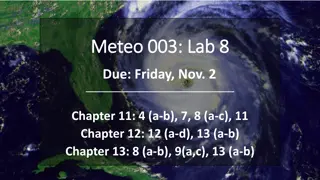Understanding Hurricane Seasons and Comparing Hurricanes
This work explores the characteristics of hurricanes, the Saffir-Simpson Scale, Accumulated Cyclone Energy, and examples from the 2011 hurricane season. It delves into hurricane formation, impact on land, and the importance of seasonal outlooks in predicting and preparing for hurricanes. The collaboration supported by the National Science Foundation aids in educating and raising awareness about hurricane phenomena.
Download Presentation

Please find below an Image/Link to download the presentation.
The content on the website is provided AS IS for your information and personal use only. It may not be sold, licensed, or shared on other websites without obtaining consent from the author. Download presentation by click this link. If you encounter any issues during the download, it is possible that the publisher has removed the file from their server.
E N D
Presentation Transcript
Comparing Hurricanes and Hurricane Seasons This work is supported by a National Science Foundation (NSF) collaboration between the Directorates for Education and Human Resources (EHR) and Geociences (GEO) under grant DUE - 1125331
Saffir-Simpson Scale Based on wind speed: What is a hurricane? What 4 conditions are necessary for hurricane formation What happens as hurricanes approach land? Hurricane Category 5 Hurricane Category 4 Category Maximum Sustained Wind Speed (knots) 157 130 156 Hurricane Category 3 111 129 Hurricane Category 2 96 110 Hurricane Category 1 74 95 Tropical Storm 39 73 Tropical Depression 0 38 Hurricanes that are Category 3 or higher (>111 knots) are called major hurricanes.
Accumulated Cyclone Energy ACE =10-4 (maximum wind speed in knots)2 maximum sustained winds every 6 hours
Example: Irene (2011) day 9/8/11 9/8/11 9/8/11 9/8/11 9/9/11 9/9/11 9/9/11 9/9/11 9/10/11 9/10/11 9/10/11 9/10/11 9/11/11 9/11/11 9/11/11 9/11/11 time 0 600 1200 1800 0 600 1200 1800 0 600 1200 1800 0 600 1200 1800 max sust winds (kt) 45 50 55 65 65 55 50 45 45 45 50 55 55 50 40 35 total ACE (10^-4 kt^2) 0.2025 0.25 0.3025 0.4225 0.4225 0.3025 0.25 0.2025 0.2025 0.2025 0.25 0.3025 0.3025 0.25 0.16 0.1225 4.15
Example: 2011 Total ACE (104kt ) Storm: 1 27.0 Katia 11 2.22 Emily 2 18.8 Irene 12 1.88 Arlene 3 18.7 Ophelia 13 1.85 Gert 4 15.9 Philippe 14 1.79 Lee 5 10.1 Rina 15 1.62 Don 6 9.17 Maria 16 1.53 Harvey 7 4.31 Nate 0.848 Unnamed 17 8 3.75 Sean 0.848 Jose 9 3.28 Bret 19 0.283 Franklin 10 2.31 Cindy Is a seasonal total ACE of 126 above normal? Below normal? Normal? Total: 126
ACE Season Totals Season type ACE (x 104 kt2) Above normal Above 150 Near normal 100-150 Below normal Below 100 What was last season s ACE total? http://www.srh.noaa.gov/bro/?n=2012event_hurricaneseasonwrap
Seasonal Outlooks There is great interest in trying to predict: How many hurricanes, major hurricanes? WHY? General awareness/preparedness Some predictions about climate are useful for deciding what crops to plant HOWEVER we cannot yet predict specific hurricanes more than a few days in advance
We are currently in a high-activity era More total storms per year More big storms per year And more energy released by all the hurricanes combined in a year (ACE)
The latest . . . nhc.jpg
Looking at the most recent hurricane season outlook for the Atlantic Ocean: http://www.cpc.ncep.noaa.gov/products/outl ooks/ What implications can you imagine for this outlook (above-normal, normal, or below- normal) for 1. a farmer in Georgia? 2. a governor in New Jersey? 3. your own life? Plant more drought-resistant or water-loving crops? Allocate funds for education and evacuation? Cut tree limbs near house? Restock emergency kit?
Summary How big is a hurricane? Saffir-Simpson scale ACE Index calculation Multi-decadal cycles (high/low activity eras) Seasonal outlooks and applications to society
References and Reuse Slide 4. Data in public domain. http://en.wikipedia.org/wiki/2011_Atlantic_hurricane_season Slides 4 and 5. Data in public domain . . . Can be updated for different years and hurricanes: http://rammb.cira.colostate.edu/products/tc_realtime/ Slide 6. Screenshot from NOAA. Website in public domain. http://www.srh.noaa.gov/bro/?n=2012event_hurricaneseasonwrap Slide 8. Screenshot from NOAA. Website in public domain. http://www.cpc.ncep.noaa.gov/products/outlooks/hurricane2012/August/figure3. gif Slide 10. Screenshot from NOAA. Website in public domain. http://www.cpc.ncep.noaa.gov/products/outlooks/figure2.gif Slide 11. Screenshot from NOAA. Website in public domain. http://www.nhc.noaa.gov/ Slide 12 refers to Hurricane Outlooks at: http://www.cpc.ncep.noaa.gov/products/outlooks/
